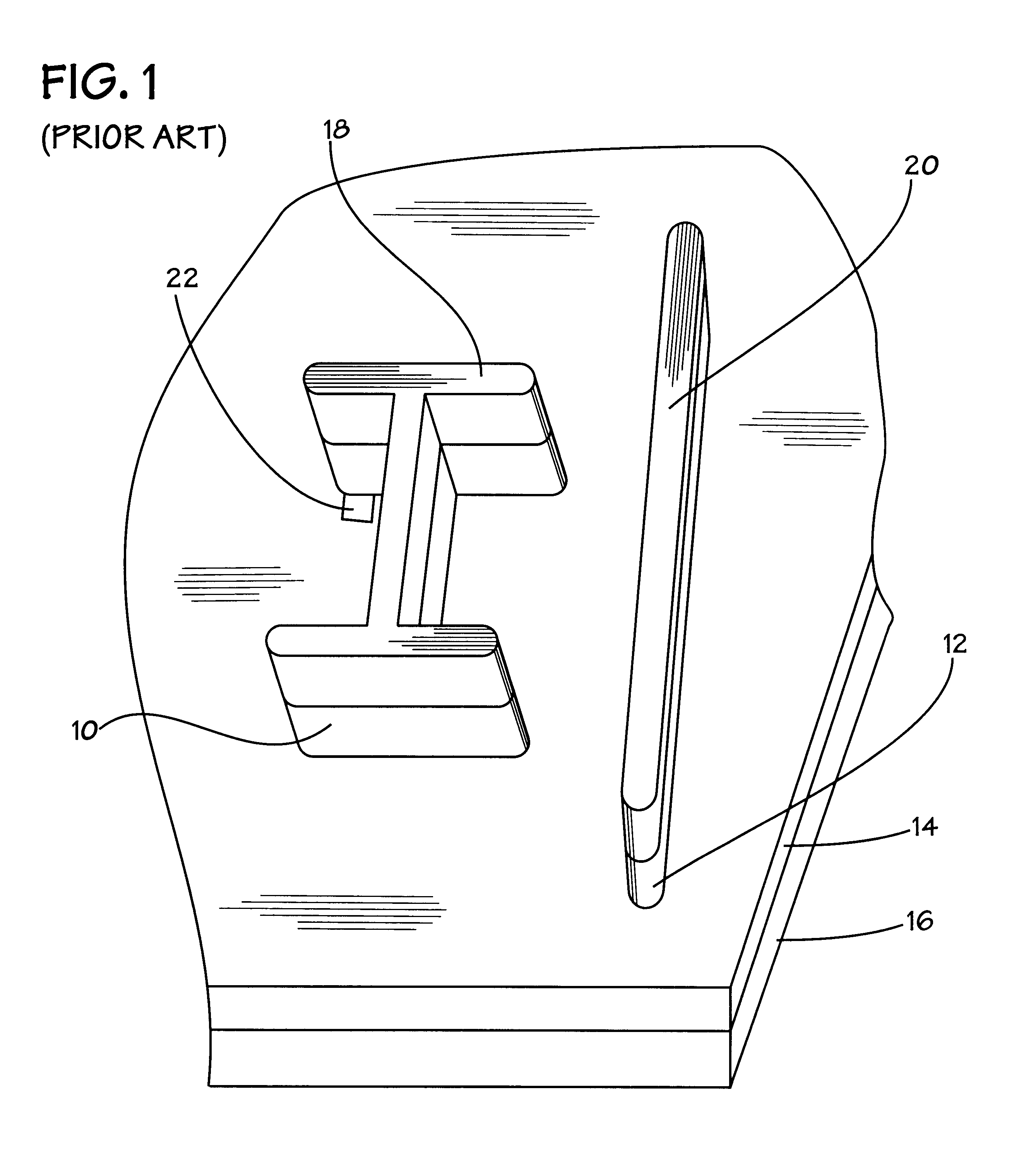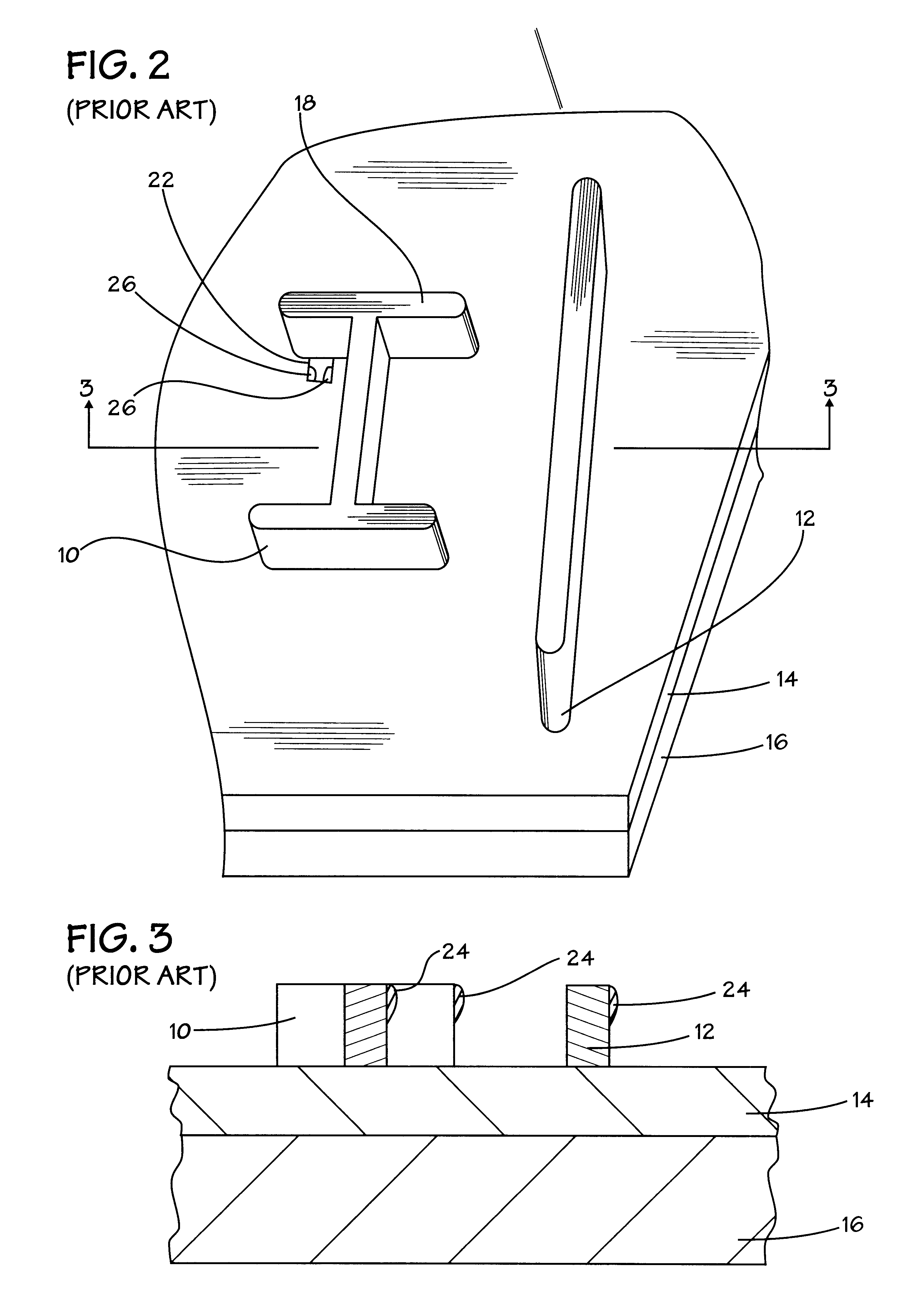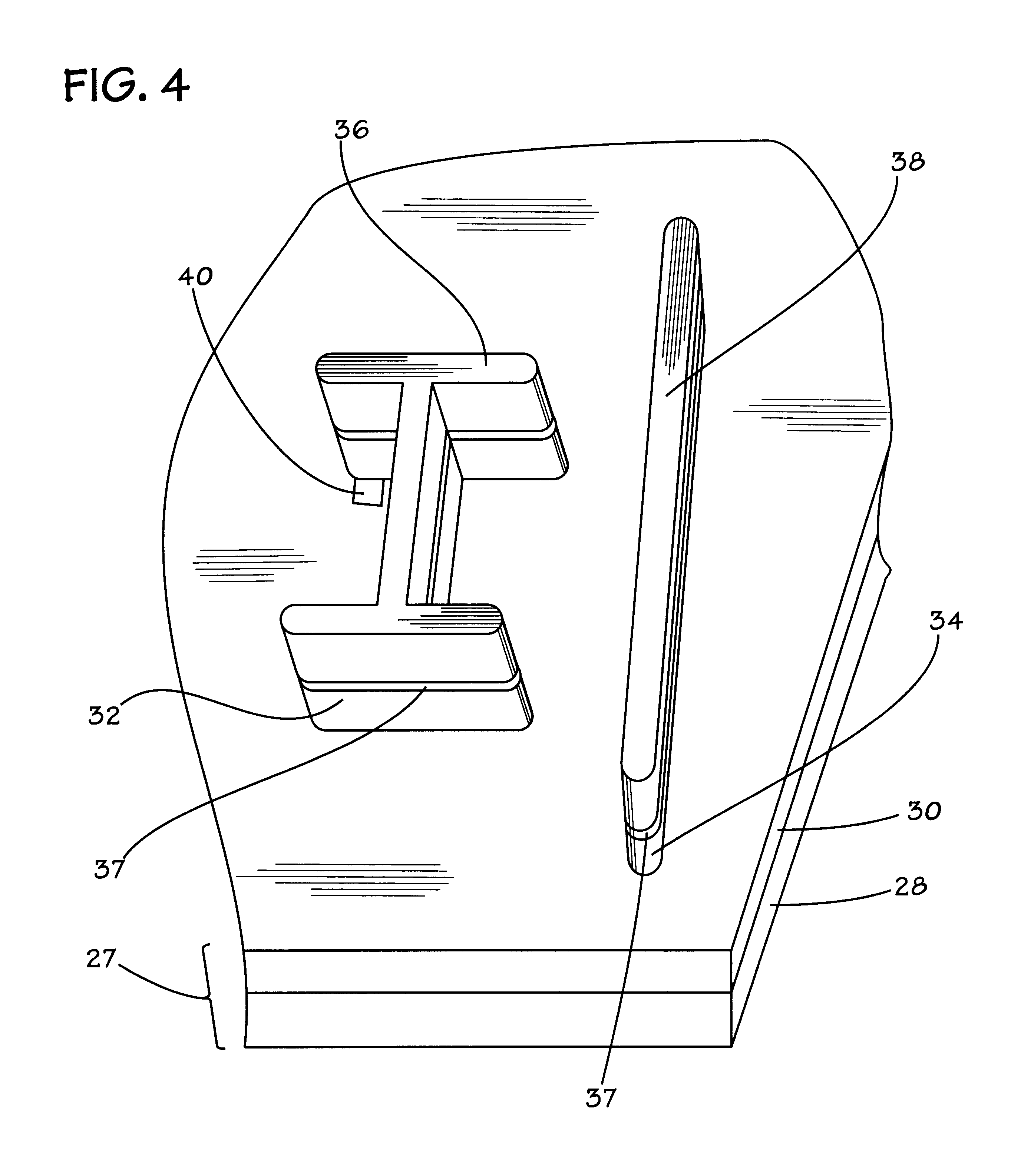Residue removal by CO2 water rinse in conjunction with post metal etch plasma strip
a technology of etching and residue removal, applied in the field of semiconductor fabrication, can solve the problems of solvent based chemistry exposed shortfalls, chemical erosion, and the potential for unattended erosion of conducting structures, and the effect of not completely eliminating the potential for such unattended erosion
- Summary
- Abstract
- Description
- Claims
- Application Information
AI Technical Summary
Problems solved by technology
Method used
Image
Examples
Embodiment Construction
In the drawings described below, reference numerals are generally repeated where identical elements appear in more than one figure. Turning now to the drawings, and in particular to FIGS. 1-3, an exemplary conventional post-metal etch stripping process will be described. FIG. 1 depicts a pictorial view of two metal interconnect structures 10 and 12, which are portions of a larger interconnect layer that is fabricated on an interlevel dielectric layer 14. The interlevel dielectric layer 14 is, in turn, fabricated on a semiconductor substrate 16. FIG. 1 is a depiction of the interconnect structures 10 and 12 just after metal etch but before resist stripping. Accordingly, photomask structures 18 and 20 respectively overlie the interconnect structures 10 and 12. Prior to the etch definition of the interconnect structures 14 and 16, the photomask structures 18 and 20 are patterned into the desired shapes for the interconnect structures 14 and 16. The interconnect structure 10 overlies a ...
PUM
| Property | Measurement | Unit |
|---|---|---|
| Flow rate | aaaaa | aaaaa |
| Solubility (mass) | aaaaa | aaaaa |
| Exposure limit | aaaaa | aaaaa |
Abstract
Description
Claims
Application Information
 Login to View More
Login to View More - R&D
- Intellectual Property
- Life Sciences
- Materials
- Tech Scout
- Unparalleled Data Quality
- Higher Quality Content
- 60% Fewer Hallucinations
Browse by: Latest US Patents, China's latest patents, Technical Efficacy Thesaurus, Application Domain, Technology Topic, Popular Technical Reports.
© 2025 PatSnap. All rights reserved.Legal|Privacy policy|Modern Slavery Act Transparency Statement|Sitemap|About US| Contact US: help@patsnap.com



